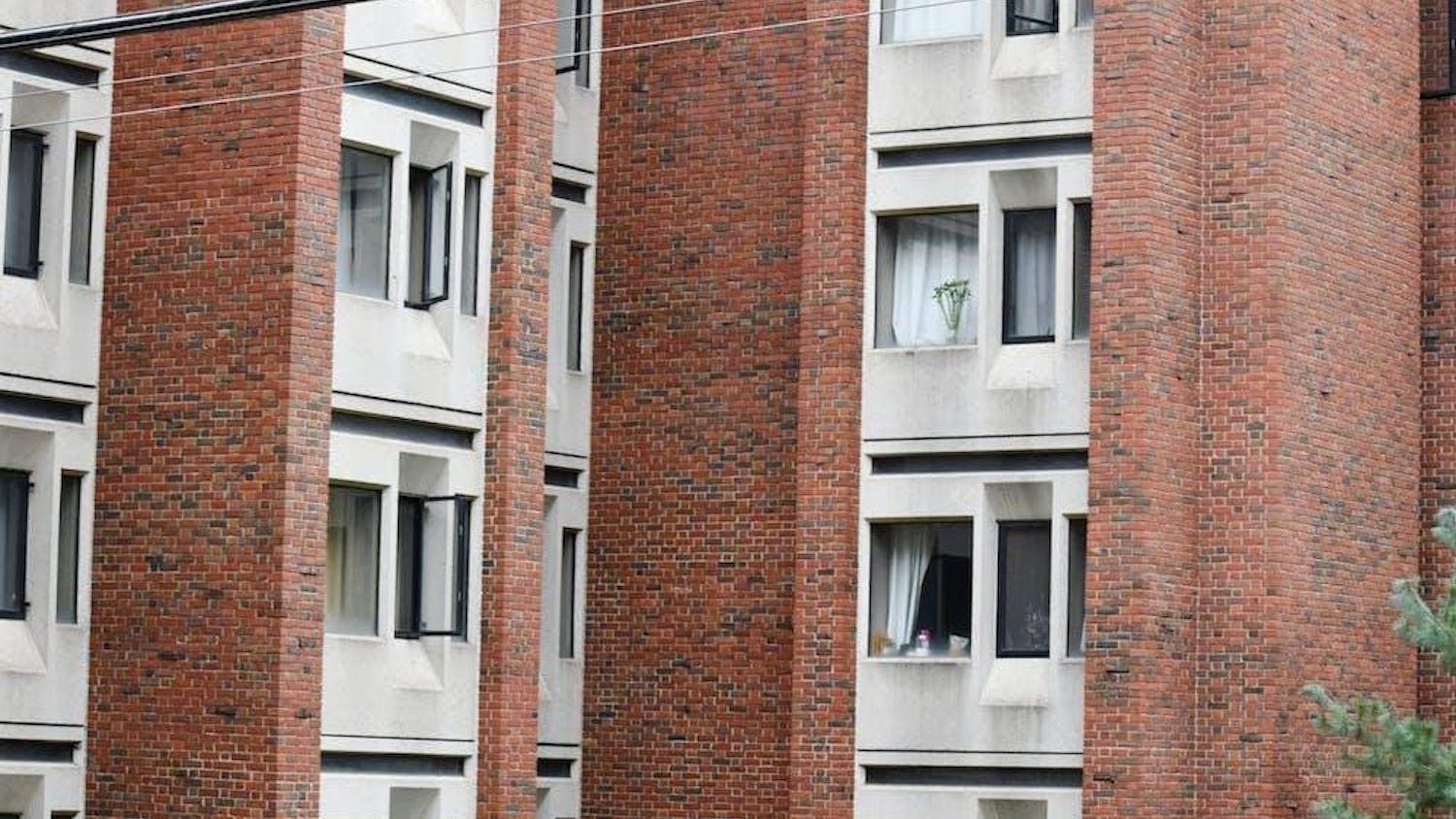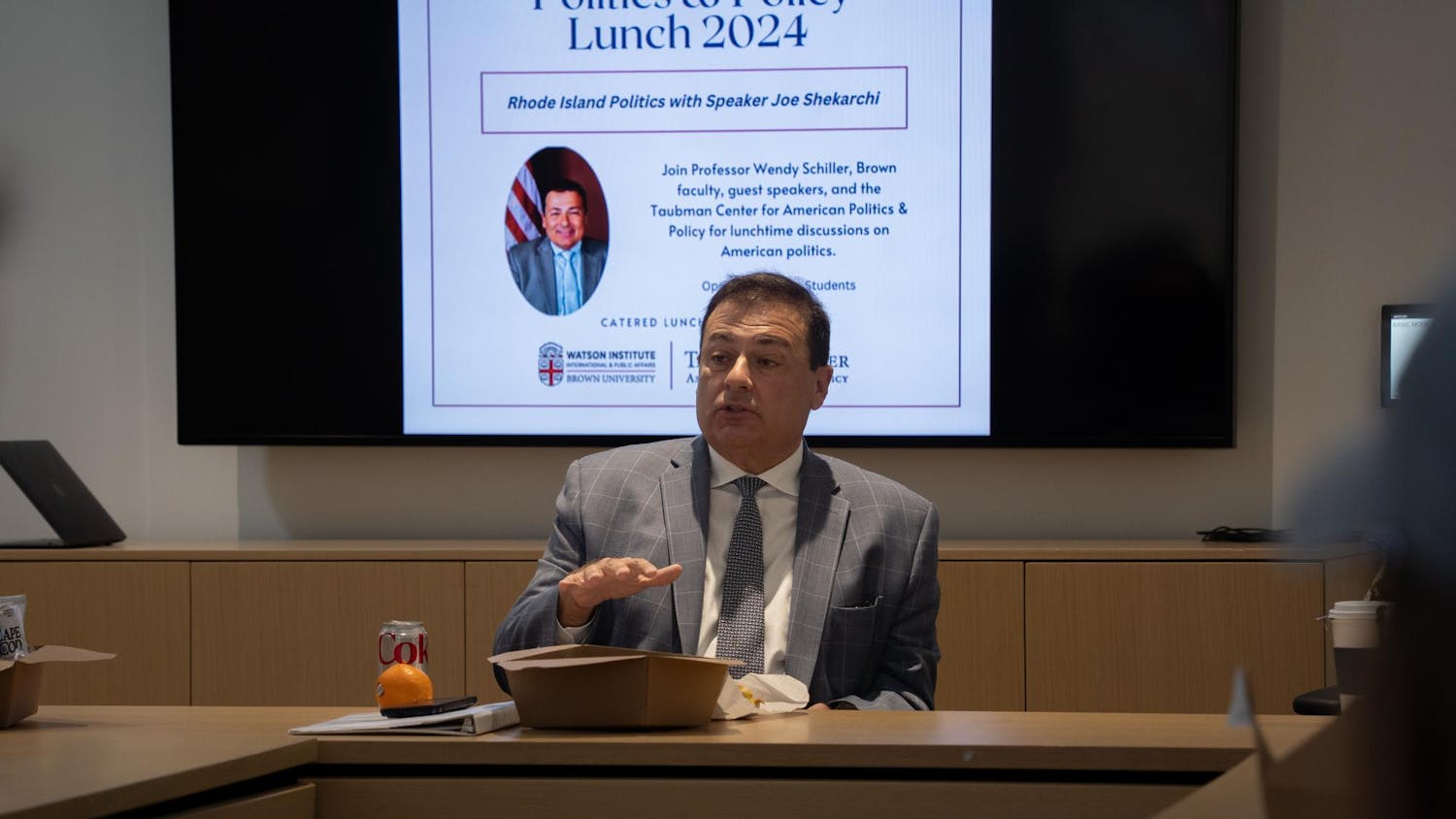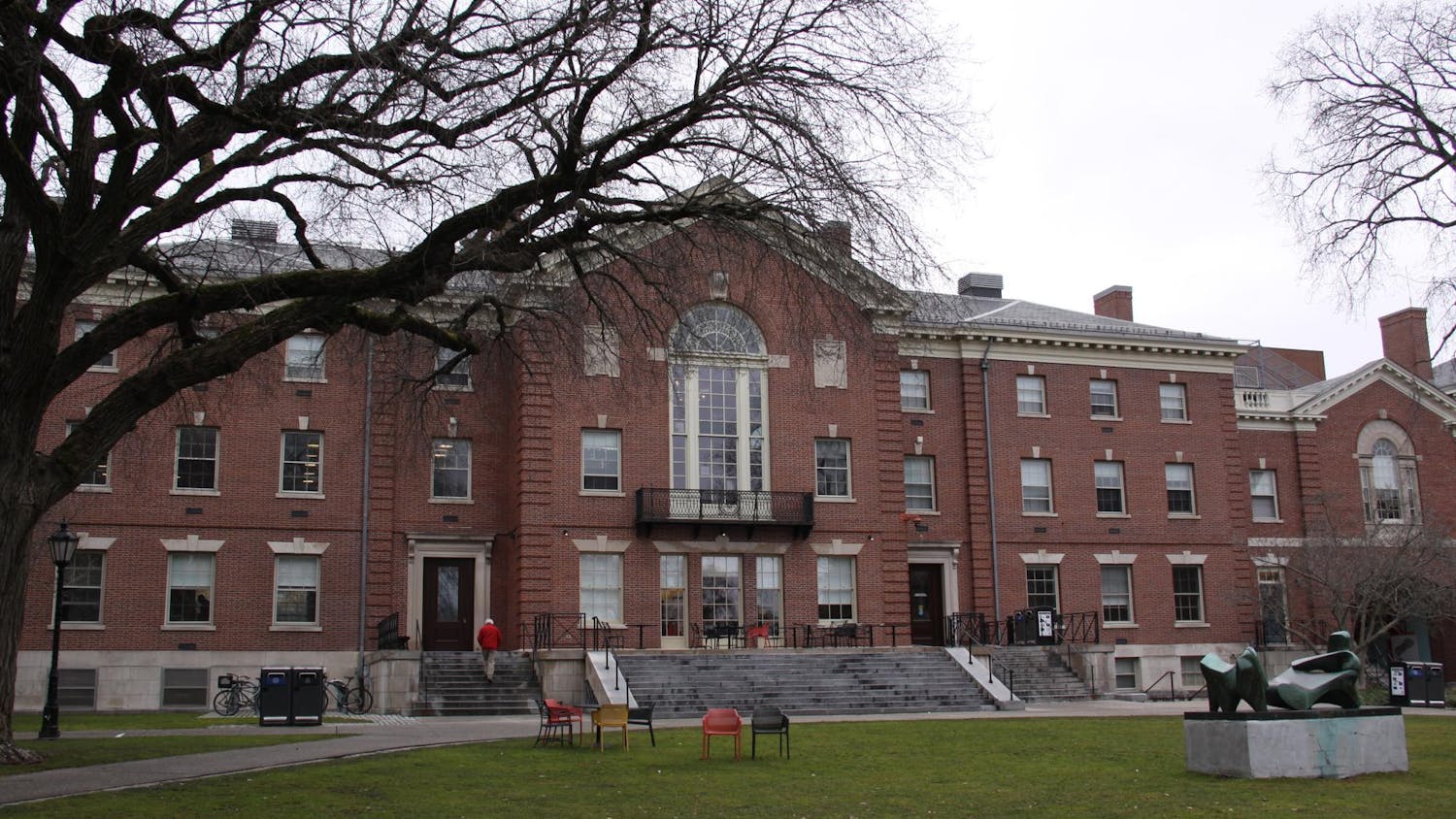Most undergraduates — about 85 percent — describe themselves as heterosexual, according to The Herald's fall poll. About 6 percent each identified as homosexual and bisexual, and about 2 percent each answered "other" and "don't know / no answer."
There are few statistics on the demographics of sexual orientation, according to Visiting Assistant Professor of Sociology Carrie Spearin. Surveys about sexuality rarely receive government funding unless the research is "under the guise of health," she said.
Still, the sexual orientation breakdown of the student body looks comparable to national averages, she said.
Spearin added, though, that she found the gender breakdown in the Brown data unusual: About 11 percent of men but only 2 percent of women identified as homosexual, whereas about 5 percent of men and 7 percent of women indicated that they consider themselves bisexual.
"It must be something about the nature of the student body," she said, speculating that Brown's culture may attract gay men or make them feel comfortable identifying as such.
"It does seem like there is a slightly larger number of homosexual men on campus than there are homosexual women," said Mike Rose '13, facilitator of QUEST, a discussion group for students questioning their sexuality. "Within the Queer Alliance, there's definitely an over-representation of gay men as opposed to lesbians," and of straight women as opposed to straight men, he said.
Perhaps "there's a strength in saying you're a homosexual male at Brown. There's support," Spearin said, though she said she isn't certain. "For women, it's not quite the same."
"I really think it all comes down to identity" and the construction of a "sexual self," she said. The gender difference could have arisen because it is "easier for men to identify themselves as homosexual at Brown and women to identify themselves as bisexual."
What's in a name
LGBTQ Resource Center Coordinator Kelly Garrett suggested a different hypothesis, attributing the gender difference to the question's terminology.
" ‘Homosexual,' historically, has been mostly used to refer to men," she said. Gay men and lesbians, especially the latter, may not identify with the term — which has been mostly superseded by gay, lesbian and queer, she said. "I know a lot of students that just identify as queer."
It's also "a little more socially acceptable for women to identify as bisexual than men," she added.
Briana McGeough '12, a facilitator of the social group Bisexuals Talk and Eat and a former facilitator of QUEST, said the overall demographics and gender breakdowns were what she would expect. But "people are very unlikely to express confusion or questioning about their sexuality" on such a survey, she said, and so the data probably "under-represents the number of people who are uncertain about their sexual orientation."
Such students may "just put the default option of heterosexual," she said.
McGeough added that when she facilitated QUEST, she often saw new faces at the meetings, leading her to believe that many Brown students are still figuring out their sexuality.
There is "a very large contingent of questioning people on campus," according to Rose — especially when students first arrive at Brown. Though The Herald's poll found no significant sexual orientation differences across age or class year, Rose said the results may have been different if the poll were conducted in September.
The poll results also don't reflect "the fluidity of sexuality and identity," said Aida Manduley '11, Queer Alliance head chair and Queer Coordinating Committee leader. If one were to question "the same 900 students in a year, or in two years, or in 10 years, these percentages might be different," she said.
Other ambiguities also make it difficult to see these numbers as fixed or comprehensive. For example, Spearin explained that two people can have the same sexual history but different sexual identities — a comment Rose echoed, saying that some people "separate things they've done incidentally and how they identify."
Culture shock
Culture can also influence the relationship between behavior and self-categorization, Spearin said. Different people, as well as different cultures, have different ideas about what classifies someone as gay or bisexual, she said.
The distinction between sexual acts and sexual identities was quantified in a recent survey conducted at the Center for Sexual Health Promotion at Indiana University. The study found that the number of people who engage in same-sex sexual activity is greater than the number who identify as something other than heterosexual.
Manduley said college students often view same-sex sexual behavior, common under the influence of alcohol, as incidental. "There are less negative repercussions also in terms of exploring sexuality for women than there are for men," she added.
"There's a thing about doing it once," Spearin said, "just to try it."
Spearin added that Brown — home of Sex Power God and FemSex workshops — in some ways markets itself to LGBTQ students looking for a liberal atmosphere.
Several students said Brown probably has a higher percentage of queer-identifying people than the rest of the country.
"Given that Brown's a pretty open environment and generally a pretty sex-positive environment, people are pretty open to explore things," McGeough said.
"Brown is a very welcoming place, but there are different factors for coming out," Garrett said, such as "your home environment, your family, other experiences you have (and) your religious background."
Manduley said it would be interesting to ask respondents, "Why do you choose to describe your sexual orientation the way you did?"
She added that the labels in the question could be limiting, especially the word "homosexual." According to a CBS News article, Americans associate more prejudices with the category "homosexuals" than "gay men and lesbians." In the study cited, about 70 percent of participants said they favor gay men and lesbians serving in the military, while fewer than 60 percent approved of homosexuals doing the same.
The cultural baggage the term carries may have "deterred some people from answering that they were homosexual," Manduley said.
"Take this with a grain of salt," Manduley said, "and remember there's more to it than just these numbers."
The Herald poll was conducted Nov. 1–2 and the question on sexual orientation has a 2.2 percent margin of error with 95 percent confidence. For the subset of men, the margin of error is 3.5 percent. For the subset of women, the margin of error is 2.7 percent. A total of 915 students completed the poll, which The Herald distributed as a written questionnaire in the University Mail Room in J. Walter Wilson and the Stephen Robert '62 Campus Center during the day and the Sciences Library at night.




